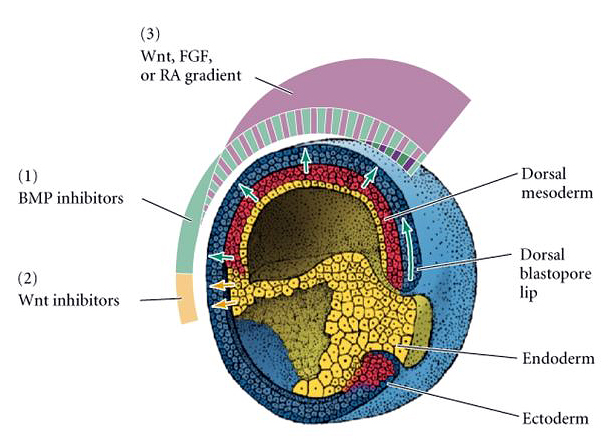

įollowing gastrulation, cells in the body are either organized into sheets of connected cells (as in epithelia), or as a mesh of isolated cells, such as mesenchyme. In vertebrates, mesoderm derivatives include the notochord, the heart, blood and blood vessels, the cartilage of the ribs and vertebrae, and the dermis. The mesoderm gives rise to many cell types such as muscle, bone, and connective tissue.The endoderm gives rise to the epithelium of the digestive system and respiratory system, and organs associated with the digestive system, such as the liver and pancreas.The ectoderm gives rise to epidermis, the nervous system, and to the neural crest in vertebrates.Each layer gives rise to specific tissues and organs in the developing embryo. Gastrulation is followed by organogenesis, when individual organs develop within the newly formed germ layers. Gastrulation takes place after cleavage and the formation of the blastula. Sponges do not go through the gastrula stage, which is why they are basal among all animals. The two layers are also sometimes referred to as the hypoblast and epiblast. In diploblastic organisms, such as Cnidaria and Ctenophora, the gastrula has only ectoderm and endoderm. These three germ layers are known as the ectoderm (outer layer), mesoderm (middle layer), and endoderm (inner layer). In triploblastic organisms, the gastrula is trilaminar ("three-layered"). dorsal-ventral, anterior-posterior), and internalized one or more cell types including the prospective gut. Before gastrulation, the embryo is a continuous epithelial sheet of cells by the end of gastrulation, the embryo has begun differentiation to establish distinct cell lineages, set up the basic axes of the body (e.g. Gastrulation is the stage in the early embryonic development of most animals, during which the blastula (a single-layered hollow sphere of cells) is reorganized into a multilayered structure known as the gastrula.


 0 kommentar(er)
0 kommentar(er)
